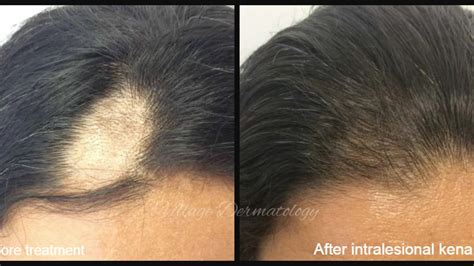Introduction:

Alopecia is a condition that results in hair loss and can affect both men and women. While there are various treatments available for alopecia, wigs can be an effective and convenient option for concealing hair loss. In this article, we will delve into the world of wigs for alopecia, exploring the different types available and providing guidance on choosing the best option for your individual needs.
Types of Wigs for Alopecia:
There are four main types of wigs available for alopecia:
1. Lace Front Wigs:
Lace front wigs have a lace base along the hairline that creates a realistic and natural-looking appearance. They are made from human hair or synthetic fibers and can be styled and customized to match your own hair. Lace front wigs are more expensive than other types of wigs but offer the most realistic and seamless finish.
2. Full Lace Wigs:
Full lace wigs are similar to lace front wigs but have a lace base that covers the entire head. This allows for more versatility in styling and parting the hair. Full lace wigs are more expensive than lace front wigs but provide the most natural and undetectable look.
3. Monofilament Wigs:
Monofilament wigs are made with a sheer fabric base that gives the appearance of a natural scalp. They are lightweight and comfortable to wear and allow for air circulation. Monofilament wigs are a good option for people with sensitive skin or scalp conditions.
4. Heat-Resistant Wigs:
Heat-resistant wigs are made from synthetic fibers that can withstand heat styling tools such as blow dryers, curling irons, and flat irons. This allows you to style the wig to match your own hair texture and create different looks. Heat-resistant wigs are more affordable than human hair wigs but may not have the same natural look and feel.
Choosing the Right Wig for Alopecia:
When choosing a wig for alopecia, it is important to consider the following factors:
1. Comfort: The wig should be comfortable to wear for extended periods and not cause any irritation or discomfort.
2. Fit: The wig should fit snugly on your head without being too tight or too loose.
3. Color and Texture: The wig should match your natural hair color and texture as closely as possible.
4. Style: The wig should be styled in a way that complements your facial features and personal style.
Common Mistakes to Avoid:
There are a few common mistakes that people make when choosing a wig for alopecia. These include:
1. Buying a wig that is too expensive: Wigs for alopecia can be expensive, but it is important to remember that you do not have to spend a lot of money to get a good quality wig.
2. Buying a wig that does not fit properly: A wig that does not fit properly will be uncomfortable to wear and may not give you the desired look.
3. Buying a wig that is not the right color or texture: A wig that does not match your natural hair color or texture will look unnatural.
4. Buying a wig that is not styled to your liking: A wig that is not styled to your liking will not give you the desired look.
Step-by-Step Approach to Choosing a Wig:
1. Determine Your Budget:
Decide how much you are willing to spend on a wig. This will help you narrow down your options.
2. Measure Your Head:
Measure the circumference of your head to determine the appropriate wig size.
3. Choose a Wig Type:
Decide which type of wig is best for you based on your comfort, fit, and styling preferences.
4. Select a Color and Texture:
Match the wig color and texture to your natural hair as closely as possible.
5. Choose a Style:
Select a wig style that complements your facial features and personal style.
6. Try on Wigs:
Try on different wigs before making a decision to ensure that you find the best fit and style for you.
Conclusion:
Wigs can be a great option for concealing hair loss due to alopecia. By understanding the different types of wigs available and following the steps outlined above, you can choose a wig that meets your individual needs and provides you with confidence and peace of mind.
